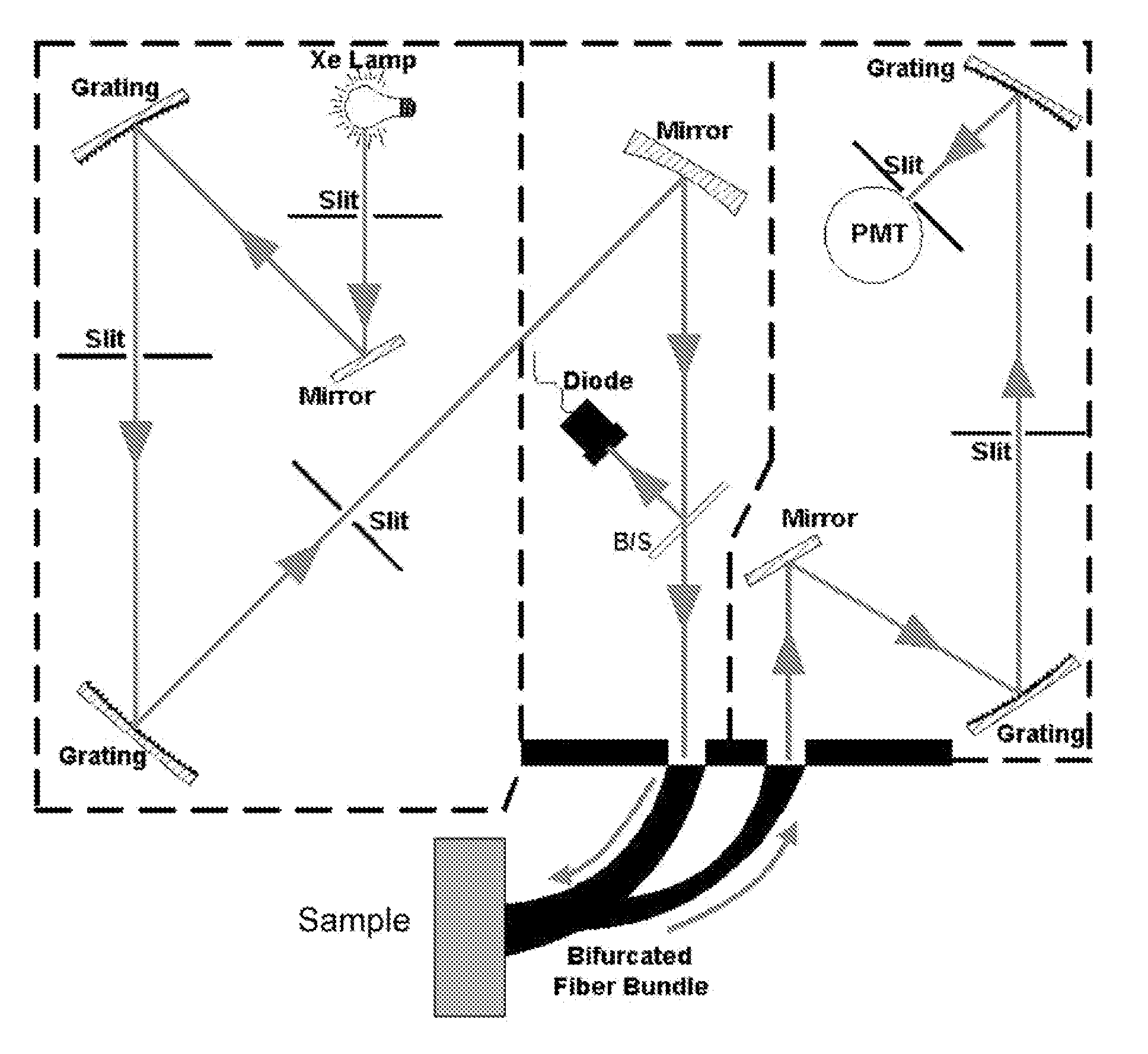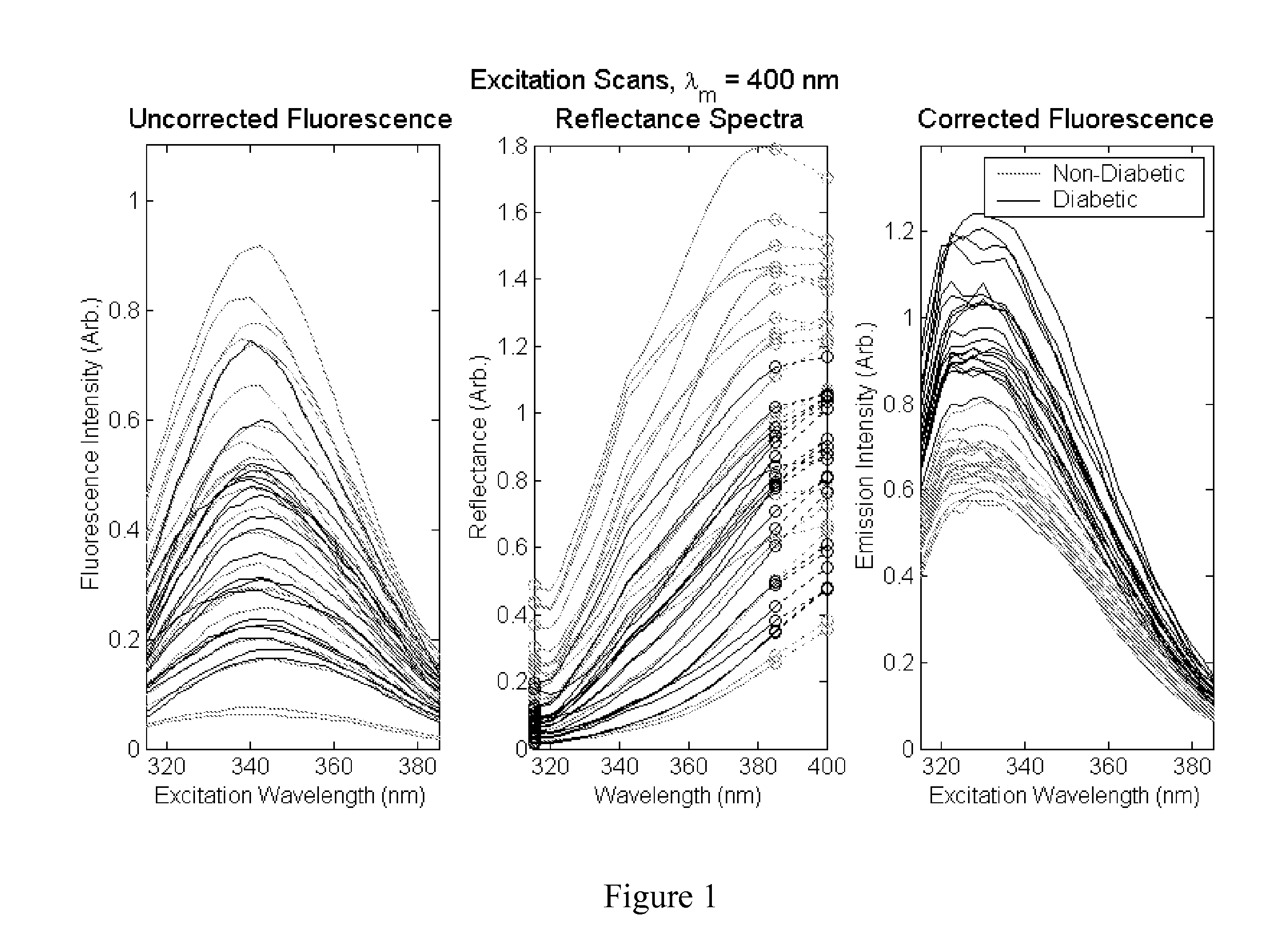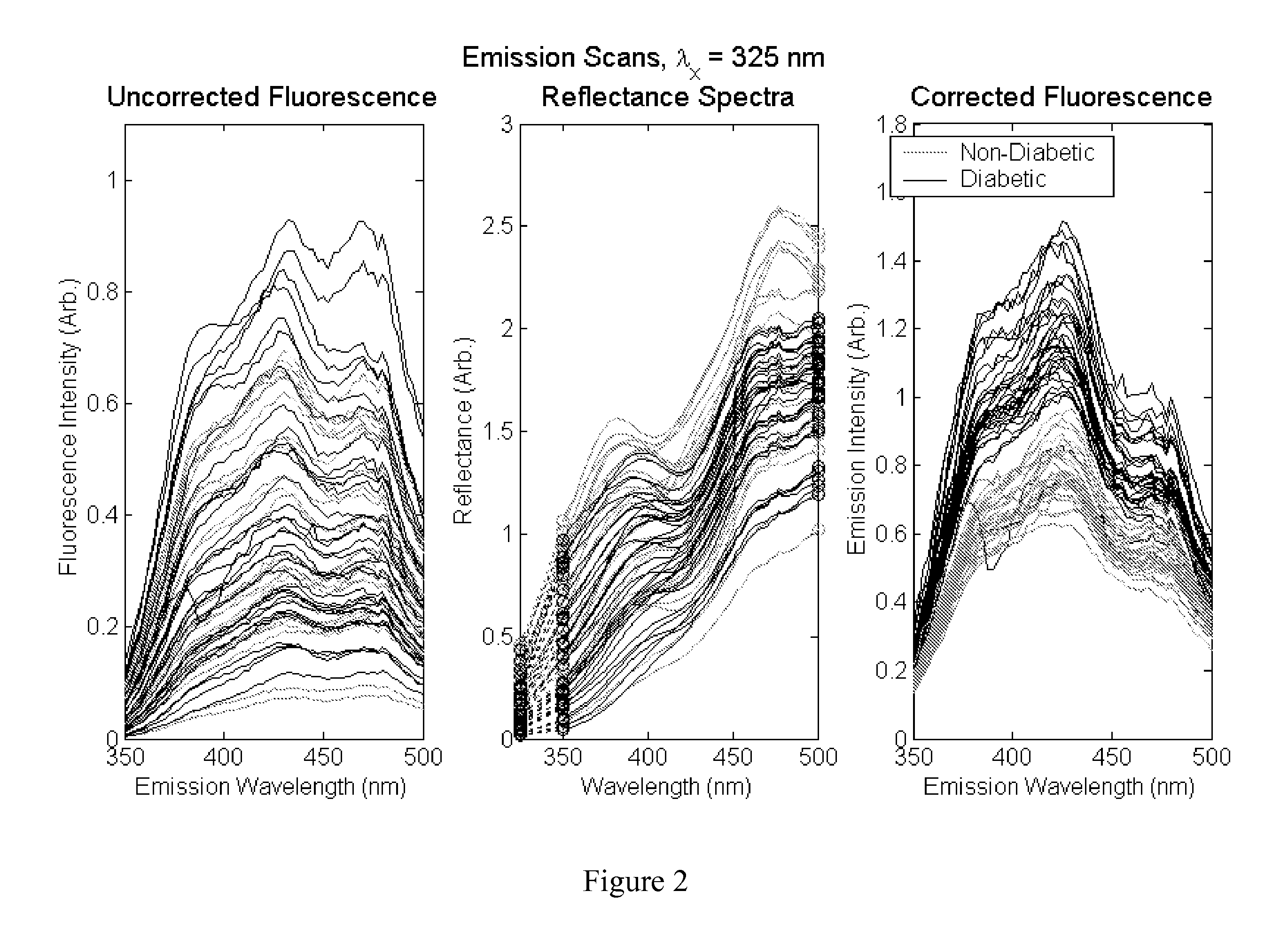Determination of a measure of a glycation end-product or disease state using tissue fluorescence in combination with one or more other tests
a tissue fluorescence and end-product technology, applied in the field of disease state determination, to achieve the effect of high sensitivity, high sensitivity and high sensitivity
- Summary
- Abstract
- Description
- Claims
- Application Information
AI Technical Summary
Problems solved by technology
Method used
Image
Examples
example i
[0120 of such a system embodies a high-intensity arc lamp, shutter, monochromator and collimator as the core elements of the light source. The optical-coupling sub-system is comprised of a bifurcated fiber bundle that couples the excitation light to the tissue and collects fluorescence emanating from the tissue. The second leg of the bifurcated bundle couples the collected fluorescent light to the detection sub-system. The detection system contains a monochromator (separate from the monochromator of component A) and a detector such as a photomultiplier. The electrical signal corresponding to the tissue fluorescence is digitized, processed and stored by a computer (Component D). The computer also controls functions of other sub-systems such as the tuning of monochromators and opening closing shutters.
[0121]In Example II, the bifurcated fiber-optic bundle of Example I is replaced by a system of lenses and mirrors to convey excitation light from the light source to the tissue and then ...
PUM
 Login to View More
Login to View More Abstract
Description
Claims
Application Information
 Login to View More
Login to View More - R&D
- Intellectual Property
- Life Sciences
- Materials
- Tech Scout
- Unparalleled Data Quality
- Higher Quality Content
- 60% Fewer Hallucinations
Browse by: Latest US Patents, China's latest patents, Technical Efficacy Thesaurus, Application Domain, Technology Topic, Popular Technical Reports.
© 2025 PatSnap. All rights reserved.Legal|Privacy policy|Modern Slavery Act Transparency Statement|Sitemap|About US| Contact US: help@patsnap.com



